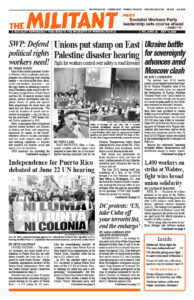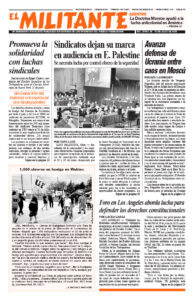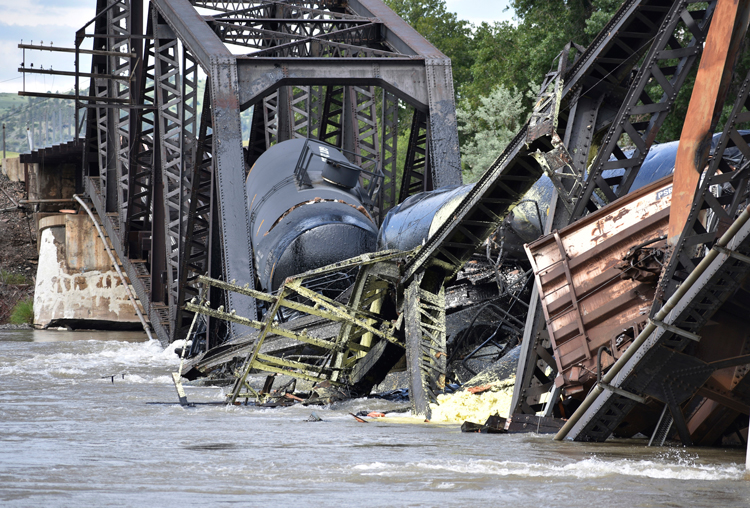“There is no immediate threat to Yellowstone County,” the sheriff’s office there claimed, hours after a train carrying toxic chemicals derailed when a bridge over the Yellowstone River collapsed upstream near Columbus, Montana, June 24. “At this time there are no known risks to public water quality,” insisted bosses at train operator Montana Rail Link.
“I’m monitoring the train derailment, and the state is standing by,” Montana Gov. Greg Gianforte bragged the same day.
So, nothing to worry about?
The derailment occurred some 110 miles from Yellowstone National Park, dropping 10 cars into the river. They contained molten sulfur, asphalt and rock. Molten sulfur can produce hydrogen sulfide and sulfur dioxide, both of which in sufficient quantity can kill you.
Two cars with sodium hydrogen sulfate derailed but fell near, not into the river. Care had to be taken to move them, because if that chemical had mixed with water, sulfuric acid would form, which is dangerous to all living organisms.
Despite the rush by rail bosses and the government to offer assurances, the Montana Fish, Wildlife and Parks Department warned residents to avoid contact with water from the river and shut down boat ramps and downstream fishing spots. Water treatment facilities in Laurel, Billings and Lockwood closed their head gates to avoid taking in river water.
Globs of asphalt appearing down river “may be associated with the derailment,” admitted the bosses.
“All of our water comes through the river for our wells and our irrigation,” John Counter, who lives two miles from the bridge, told ABC News. “So it’s a little concerning.”
He pointed out the bridge had been battered by high water levels after recent storms. In 2021 a section of it used for car traffic was removed after erosion made it too dangerous.
Joseph Racicot, president of Montana Rail Link, told the press the company had inspected the bridge in May, but offered no explanation for why it came apart barely two months later, creating a potential disaster.


